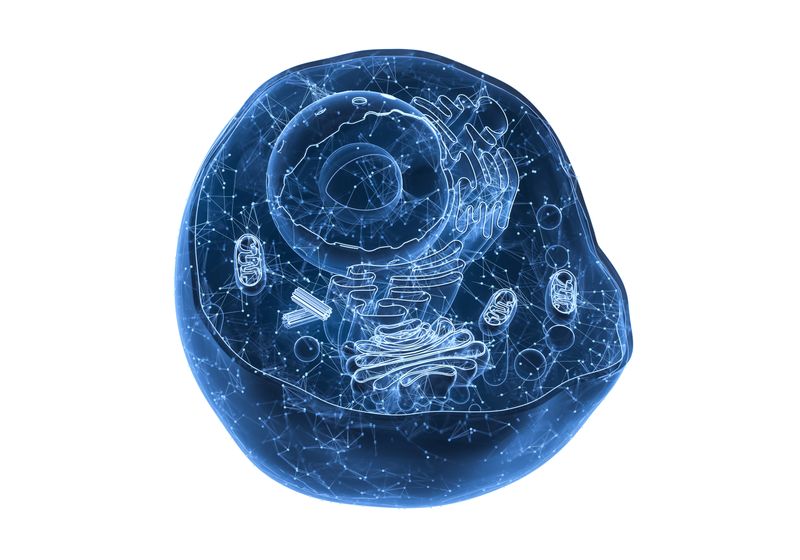Researchers from New York University demonstrate memory-pathways driven learning effect in non-neuronal cells.
In the early 1970s, neuropsychiatrist Eric Kandel and his colleagues at New York University found that even invertebrates can remember, in their studies on the gill and syphon withdrawal reflex response to painful stimuli in the sea slug, Aplysia.1 In further investigations in Aplysia, Kandel’s team found that for learning, a single stimulus resulted in short-term memory that lasted minutes, whereas repeated, spaced training created long-term memory that lasted days to weeks.2,3 This is an example of the massed-spacing effect, which defines an optimal training intertrial interval (ITI) between training sessions for long-term memory retention. Scientists have since identified the signaling mechanisms underlying ITI in neurons and found that they share many of the same molecules with signaling pathways in non-neuronal cells.4,5
The concept of cellular memory is not new. For example, the single-cell aquatic ciliate Paramecium exhibits behaviors that suggest it can form memories or learn even though it lacks a nervous system.6 However, it remained unclear if non-neuronal cells in multicellular organisms can also produce memories. Now, in a recent study published in Nature Communications, researchers showed that non-neuronal human cells exhibit the same massed-spaced effect as neurons upon stimulation of certain shared signaling pathways.7 The findings demonstrate for the first time that non-neuronal human cells can “remember” certain stimuli.
A scientist in Thomas Carew’s laboratory at New York University performs experiments on cultured non-neuronal cells.
Nikolay Kukushkin
To investigate whether or not non-neuronal cells can form memories, Nikolay Kukushkin, a scientist in Thomas Carew’s lab at New York University and a coauthor of the study, built on his recent work. In 2022, Kukushkin and his colleagues discovered that extracellularly regulated kinase (ERK) signaling, which is common to all cell types, defines the ITI in Aplysia neurons.5 The team also found that long term memories formed only when weak doses of serotonin preceded a strong pulse, not vice versa, and that the initial weak dose helped to maintain the necessary level of phosphorylated ERK.
In neurons, serotonin kicks off a series of signaling events when it binds to its receptor, resulting in changes to ERK phosphorylation and the expression of immediate early genes required for memory formation. While serotonin is essential for memory formation in organisms, non-neuronal cells lack serotonin receptors but they express other signaling components seen in neurons.8 These include protein kinase A (PKA) and protein kinase C (PKC), which modulate gene expression in response to various extracellular signals.
To determine whether non-neuronal cells also form memories, in this study, the team used forskolin and phorbol ester, chemicals that stimulate PKA and PKC signaling respectively.7 The team investigated if these chemicals could stimulate memory formation in neuroblastoma and kidney cell lines.
They followed the decay of a luciferase reporter under the control of the cyclic AMP response element (CRE), a genetic element that participates in the cells’ response to the chemical stimuli. They observed that the luciferase signal persisted longer following multiple spaced pulses than a single pulse of the agonists, and that this response depended on the number of training pulses and exact temporal spacing, which are hallmark features of memory.
Kukushkin noted, “We are seeing how cells retain experience, all cells retain their memories, and this is how they do it.” He added, “Getting anything done in neuroscience takes months, and this system allows you to study many processes in a much shorter time and this high-throughput system allows you to study many processes in a much shorter time.”
Regarding the broader implications of non-neurons retaining memory, Kukushkin commented, “It’s a philosophical question: What is memory? Memory is not a what, it’s a how. We don’t think of other cells in our body the same way as neurons even though these other cells can respond to experience.”
Curtis Thorne, a cell biologist at the University of Arizona who was not involved in this study, said, “One thing [Kukushkin’s group] do well is they give an input signal in short pulses and repeatedly with different spacing. I think it’s an important idea that signals come and go, like insulin for example, and that cells want to count these pulses and respond in the right way. They have developed a nice system to test this. It’s an idea that works on multiple scales. In lecturing to students, for example, lightly touching on the same topic repeatedly over time is the most effective technique for long-term memory.”




